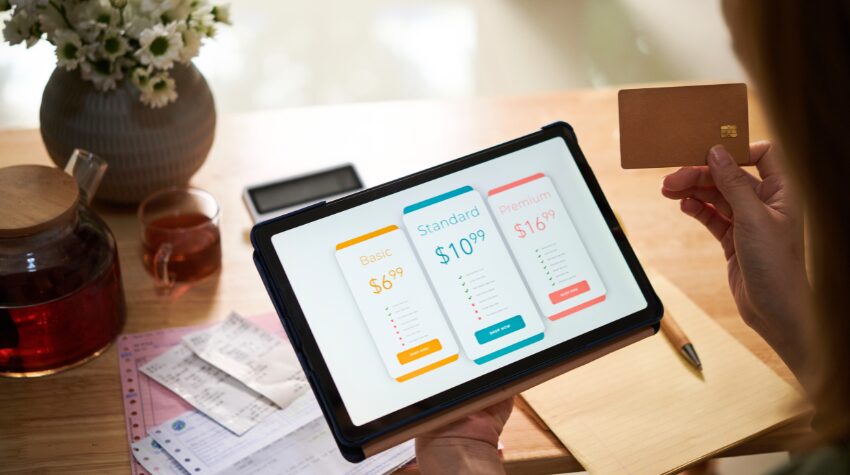
In recent years, subscription services have experienced a remarkable—and, in many cases, alarming—boom. What started as a system for convenience, transforming the way we consume products and services, has turned into a snowball effect that keeps growing and spiraling out of control more every day.
From streaming platforms like Netflix and Spotify, which we could say were the pioneers in their industry, to product delivery subscriptions, such as food boxes or cosmetics, subscription services have become a daily part of many people’s lives. But, as much as we love the convenience of having everything delivered to our door and the endless programming options, are these subscriptions really worth it? Or are we just spending money without realizing it?
Let’s explore the pros and cons of subscription services, so at the end of this article, we can answer our question and make informed, responsible decisions for our financial well-being.
Advantages:
- Accessibility and Convenience: Services like Netflix, Spotify, or Amazon Prime offer unlimited access to content (movies, music, books) for a fixed fee. This can be convenient and often cheaper than buying products or accessing services individually.
- Personalization: Platforms like Stitch Fix (personalized clothing) or HelloFresh (meal kits) customize their offerings based on user preferences. These services create a personalized experience, helping you save valuable time on decision-making.
- Access to Exclusivity: Some subscription services offer exclusive products or limited editions, which can be appealing to consumers looking for the latest and greatest finds.
Disadvantages:
- Recurring Costs: Subscription services may seem cheap at first (e.g. $10 per month), but have you ever actually sat down to calculate how much it adds up to over a year? And more importantly, how many subscriptions you’re paying for each month?
- Infrequent Use: Often, we don’t fully utilize the services we subscribe to. We end up paying for more than what we use. Let’s be honest… who has time to watch programming on 3 different streaming platforms?
- The “Subscription Risk”: The ease of signing up for these services with free trials, promotions, etc., often leads consumers to sign up impulsively, only to forget to cancel their subscriptions before they’re charged. I’m sure this has happened to all of us at least once.
At this stage, we’ve identified three advantages and three disadvantages of subscriptions. So, how do we decide if these subscriptions are worth it, or if we should unsubscribe or just keep the most relevant ones? And by “relevant,” I mean the ones we truly use in our daily lives.
How to Decide If a Subscription is Worth It?
- Take Inventory: Make a list of all the active subscriptions you have. Are you using them? If not, it might be time to cancel them. Let’s do a quick memory exercise: think about how many times you watched Apple TV+ this month?
- Evaluate the Value: Think about the value you’re getting for the price you’re paying. If a subscription offers something you use frequently and enjoy, it’s probably worth it. If not, it may be time to reconsider. And this takes us back to the previous point: maybe you subscribed to a platform because it was what you needed at the time, but if you’re no longer using it, don’t keep incurring the cost.
- Consider Alternatives: Are there other ways to access the same service or product without paying a monthly subscription? Sometimes, paying for a single product or service might be more cost-effective than subscribing long-term. If you’re paying for Spotify but only listen to a single album, it might be better to just buy that album. The price difference may surprise you.
In conclusion It’s not about unsubscribing from everything we enjoy but rather being aware of what we’re paying for and making sure the benefit outweighs the cost. Don’t let those small expenses add up on your bank statement just because at some point you think you might need a service.
You could use specialized apps to manage subscriptions, like Truebill or Bobby, which allow you to see all your active subscriptions in one place and alert you when a payment is approaching.
Also, setting a monthly budget for subscriptions is a great way to avoid unnecessary spending. You can allocate a fixed amount each month for these services to ensure you’re only paying for what’s necessary.
Your subscriptions shouldn’t be a surprise—review and take control before your money slips away unnoticed!








